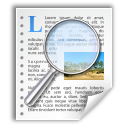Free readability tools to check for Reading Levels, Reading Assessment, and Reading Grade Levels.
[ HOME ] Check Your Readability: Check Text Readability NOW  Free Readability Calculators Learn about Readability Formulas: Dale-Chall Formula Flesch Reading Formula The Fry Graph SPACHE Formula [ View All ] Readability Help: [ View All Articles] Writing Tips: [ View All Articles] English Writing Products: StyleWriter software Site Map About Us Contact Us Write for Us |
How to Use the SMOG Readability Formula on Health Literacy MaterialsA number of readability formulas can help you assess the literacy level of printed communications; however, the SMOG Readability Formula (Simple Measure of Gobbledygook) is a popular method to use on health literacy materials.
SMOG Readability Formula1. Count 10 consecutive sentences near the beginning of the text that you want to assess, 10 in the middle, and 10 near the end. Count as a sentence any string of words ending with a period, question mark, or exclamation point.2. In the 30 selected sentences, count every word of three or more syllables. Any string of letters or numbers beginning and ending with a space or punctuation mark should be counted if you can distinguish at least three syllables when you read it aloud in context. If a polysyllabic word is repeated, count each repetition. 3. Estimate the square root of the number of polysyllabic words counted. Take the square root of the nearest perfect square. For example, if the count is 95, the nearest perfect square is 100, which yields a square root of 10. If the count lies roughly between two perfect squares, choose the lower number. For instance, if the count is 110, take the square root of 100 rather than that of 121. 4. Add 3 to the approximate square root. This gives the SMOG Grade, which is the reading grade that a person must have to understand your text. The general rule of thumb is to aim materials for a 6th-grade reading level or lower.  Online calculators will do this assessment for you. Just go to http://www.wordscount.info/hw/smog. jsp and cut and paste your text into the calculator. Assessing Pre-Existing Communication MaterialsAlthough it is easier to create materials for specific literacy levels, it is also likely you may want to adapt existing materials for your own use. Use the following assessment guide to determine if you should use an existing material or to develop one yourself. It is also a helpful tool to refer to as you develop your own materials.Content
Organization
Source Credibility
Language and Tone
Cultural Competence
Design
Overall Impression
About Readability >> READABILITY FORMULAS New Dale-Chall - Flesch Reading Ease - Flesch Grade Level - Fry Graph -Gunning FOG - Powers-Sumner- Kearl - SMOG - FORCAST - Spache  StyleWriter software: use it to write better content! Download your free trial! |
|
|
||